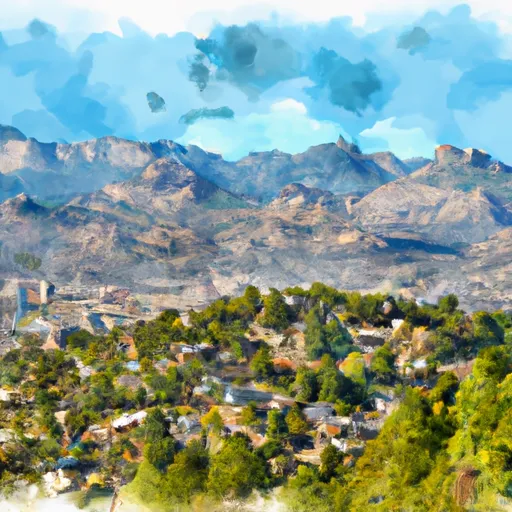-
 Snoflo Premium
Snoflo Premium
Get unlimited access to all our content
With no Ad interruptions! - Start Your Free Trial Login with existing account
Mount-Lemmon
Eden Index
Climate
9.3
•
Recreation
5.7
•
Community
•
Safeguard
5.7/10

Mount Lemmon is a picturesque mountain located in southern Arizona, near Tucson. With an elevation of 9,159 feet, it offers a delightful escape from the desert heat and boasts a unique climate. Known as a "sky island," Mount Lemmon experiences significantly cooler temperatures compared to the surrounding lowlands. The climate is characterized by mild summers and chilly winters, making it a popular destination for outdoor enthusiasts seeking relief from the scorching desert heat.
The hydrology of Mount Lemmon is primarily sustained by the Santa Catalina Mountains, which capture and store rainwater. The mountain is home to several streams and creeks, including the Sabino Creek, which flows through the scenic Sabino Canyon. These water sources contribute to the lush vegetation and diverse wildlife found on the mountain.
Outdoor recreation opportunities abound on Mount Lemmon. Hiking trails offer beautiful panoramic views, and rock climbing enthusiasts can enjoy challenging routes on the mountain's craggy cliffs. In the winter, visitors can experience skiing and snowboarding at the Mount Lemmon Ski Valley. Additionally, camping, picnicking, and wildlife watching are popular activities. Mount Lemmon is a haven for nature lovers, providing an idyllic retreat with its scenic beauty, pleasant climate, and abundant recreational opportunities.
What is the Eden Index?
The Snoflo Eden Index serves as a comprehensive rating system for regions, evaluating their desirability through a holistic assessment of climate health, outdoor recreation opportunities, and natural disaster risk, acknowledging the profound impact of these factors on livability and well-being.
Climate Health Indicator (CHI): 9.3
Mount-Lemmon receives approximately
877mm of rain per year,
with humidity levels near 47%
and air temperatures averaging around
10°C.
Mount-Lemmon has a plant hardyness factor of
7, meaning
plants and agriculture in this region tend to thrive during the non-winter months.
By considering the ideal temperature range, reliable water supplies, clean air, and stable seasonal rain or snowpacks, the Climate Health Indicator (CHI) underscores the significance of a healthy climate as the foundation for quality living.
A healthy climate is paramount for ensuring a high quality of life and livability in a region, fostering both physical well-being and environmental harmony. This can be characterized by ideal temperatures, reliable access to water supplies, clean air, and consistent seasonal rain or snowpacks.
Weather Forecast
Streamflow Conditions
Santa Cruz
Area Rivers
Santa Cruz
Snowpack Depths
Santa Cruz
Reservoir Storage Capacity
Santa Cruz
Groundwater Levels
Recreational Opportunity Index (ROI): 5.7
The Recreational Opportunity Index (ROI) recognizes the value of outdoor recreational options, such as parks, hiking trails, camping sites, and fishing spots, while acknowledging that climate plays a pivotal role in ensuring the comfort and consistency of these experiences.
Access to outdoor recreational opportunities, encompassing activities such as parks, hiking, camping, and fishing, is crucial for overall well-being, and the climate plays a pivotal role in enabling and enhancing these experiences, ensuring that individuals can engage in nature-based activities comfortably and consistently.
Camping Areas
| Campground | Campsites | Reservations | Toilets | Showers | Elevation |
|---|---|---|---|---|---|
| Molino Basin | 37 | 4,338 ft | |||
| Catalina State Park | 120 | 2,650 ft | |||
| Agave Gulch Military | 193 | 2,676 ft | |||
| Spencer Canyon | 60 | 7,858 ft | |||
| General Hitchcock | 11 | 5,971 ft | |||
| Rose Canyon | 74 | 7,034 ft | |||
| Peppersauce | 17 | 4,602 ft |
Nearby Fishing
Catastrophe Safeguard Index (CSI):
The Catastrophe Safeguard Index (CSI) recognizes that natural disaster risk, encompassing floods, fires, hurricanes, and tornadoes, can drastically affect safety and the overall appeal of an area.
The level of natural disaster risk in a region significantly affects safety and the overall livability, with climate change amplifying these risks by potentially increasing the frequency and intensity of events like floods, fires, hurricanes, and tornadoes, thereby posing substantial challenges to community resilience and well-being.
Community Resilience Indicator (CRI):
The Community Resilience Indicator (CRI) recognizes that education, healthcare, and socioeconomics are crucial to the well-being of a region. The CRI acknowledges the profound impact of these elements on residents' overall quality of life. By evaluating educational resources, healthcare accessibility, and economic inclusivity, the index captures the essential aspects that contribute to a thriving community, fostering resident satisfaction, equity, and social cohesion.

